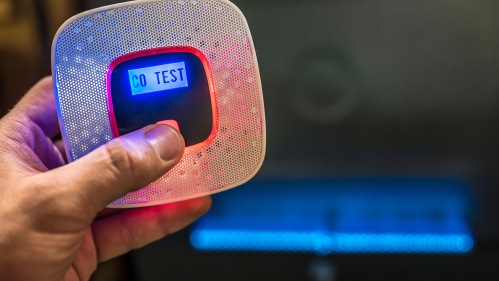Carbon Monoxide Poisoning Risk Rises During Winter Storms

A Rutgers expert discusses the need for increased precautions around gas appliances and other CO sources
Winter storms that have brought record-breaking cold and power outages to many parts of the United States also have heightened the risk of carbon monoxide (CO) poisoning. Every year, at least 430 people die in the United States and 50,000 people visit emergency rooms because of accidental CO poisoning, according to the Centers for Disease Control and Prevention.
“Multiple recent storms, with high snow totals, gusting winds and power outages, have caused an uptick in poison exposures to a variety of substances,” says Diane Calello, executive and medical director of the New Jersey Poison Control Center at Rutgers New Jersey Medical School’s Department of Emergency Medicine. “Not surprisingly, deadly carbon monoxide gas tops the list.”
Calello discusses how to stay safe from carbon monoxide poisoning.
What are common sources of carbon monoxide at home?
Carbon monoxide mainly comes from gas appliances and heating systems. Other sources include portable gas generators, snow-blocked tailpipes, heating and dryer vents, portable room heaters, fireplace or chimney flues and malfunctioning heating systems for indoor swimming pools and hot tubs. We have even seen poisoning from people smoking hookahs in small or poorly ventilated spaces.
To minimize risk, clear the snow from heating and dryer vents and tailpipes. Do not idle your car in the garage and be careful of remote start engines that could turn on by mistake. Periodically inspect your chimneys and heating systems to prevent blockages and open flues when using your fireplace. Only use generators outside, placed more than 20 feet away from all structures. Never use the stove to heat your residence or use charcoal-burning devices, including hookahs, inside your home, camper or tent. Do not idle a car in a snowbank. If stuck in the snow, make sure to clear the tailpipe and surrounding area to prevent exhaust fumes from entering the car. Install carbon monoxide detectors in your home. They are the only way to detect this odorless, colorless, life-threatening gas.
What are the symptoms of carbon monoxide poisoning?
Recognizing CO poisoning is more challenging in the winter as symptoms often mimic viral illnesses like the common cold and flu. Low-level exposure can produce headaches, sleepiness, fatigue, confusion and irritability. At higher levels, it can cause nausea, vomiting, irregular heartbeat, impaired vision and coordination and even death.
What should you do if you suspect carbon monoxide poisoning?
CO poisoning should be handled as a medical emergency. If you feel ill, go outside to fresh air. You should start to feel better once you are away from the source of the gas. If you suspect someone was exposed, get help immediately by calling your area poison control center [800-222-1222]. If someone is unconscious, not breathing, hard to wake up or seizing, call 911 first, then contact poison control for further assistance.


